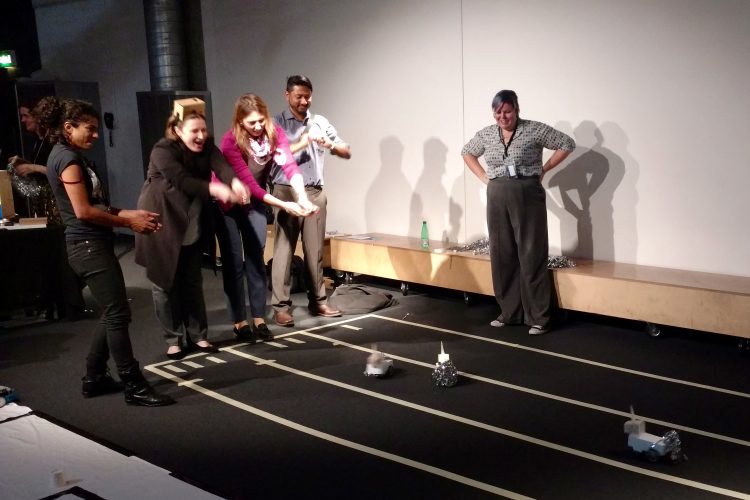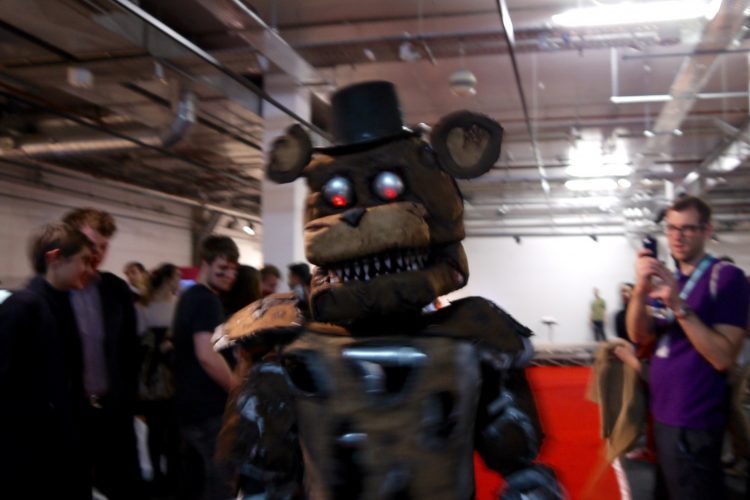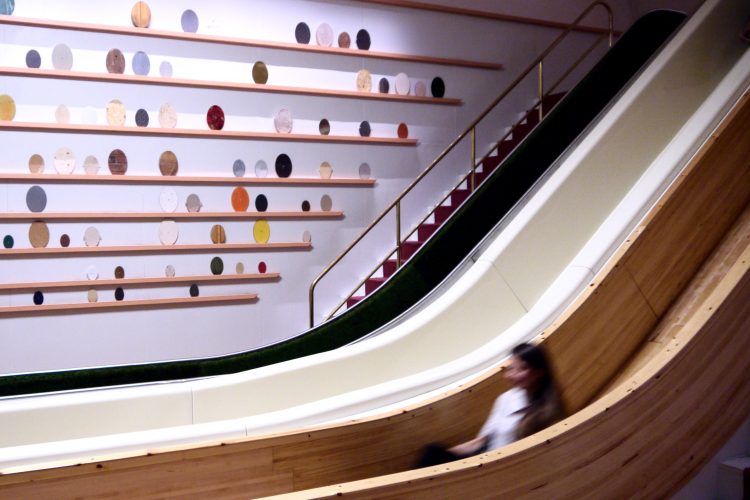One night at the DIY robot museum
Published 31 October 2017 by Elsa Ferreira
The Science Museum in London organized a night event around retro-gaming on October 25. Cardboard robots, games and friction slide, regression has some good sides.
London, from our correspondent
We already knew it, spending the night at the museum is much more of a fun experience than it seems. Since Ben Stiller fought against mummies and dinosaurs at the Natural History Museum or Ross Geller took Rachel Green to an ultra-romantic rendezvous at the Prehistory Museum (don’t pretend you don’t know…), the concept even acquired a cult aura among nerds.
When the Science Museum in London announced that their next Lates, monthly after-hours theme night, would be dedicated to retro-gaming to celebrate their next exhibition Power Up, on the history of video games, our heart beat went sky high. We were not alone: around 3,500 people attended, mostly young adults (the evening is adults-only).
Night event or not, the Science Museum is worth a visit. In its permanent collection, with free access, iconic objects show the evolution of scientific discoveries and their impact on our society: locomotives and flight simulators in VR, energy network simulator and important medical breakthroughs…
Upstairs is taking place Power Up, an exhibition on retro-gaming where 180 game consoles and forty years of video game history are presented. Visitors can try their hand at the best games, from Pacman to Pong including Minecraft. A true success: the exhibition is full that night and jam-packed. To come face to face in 8-bits, we will be back (it lasts until October 31).
Cute robots and unicorn races
Let’s be honest. We went through the city towards South Kensington, where the greatest public museums of the city can be visited, above all else to see the creations of Helen Steer, founder of Do It Kits, that commercializes electronic kits for classrooms.
I'm doing my first event for @sciencemuseum &I'm very excited! Come play Robot Unicorn vs Autonobot 25 Oct #maker https://t.co/XPYiGqcMwM pic.twitter.com/zToJ24FPjm
— helenleigh (@helenleigh) October 12, 2017
She had been tempting us on Twitter for several weeks with her cardboard unicorn robot with an admittedly rudimentary but nonetheless enjoyable look. On site, V2 was born and we did not regret coming. With their 3D printed horn and their garlands of LEDs, we had rarely seen such cute robots. “I try to bring a fun aspect, but also a sense of ridicule and humor to technology,” explains the maker, in residence at the Machines Room makerspace.
A unicorn race is organized. Propelled by Micro:bit, sensors allow you to pilot the robot as you would ride a horse: to make it start, move the reins upwards. To stop, pull downwards. Helen Steer is also exhibiting her kit Time to React, a large red button that enables you to measure your reflexes and bring pupils in a science class to discuss Arduino but also neurons and neural circuits.

3 million players against dementia
Further on, the video game serves health. With Tobii Dynavox first, a system that allows you to command the screen with your eyes. Once caught up in a game in which a helicopter somehow avoids stalactites and stalagmites according to our eye movements, we are led to something more serious, the communication part. Having calibrated the system, you can write “Hello” and open web pages with your eyes. The system is well thought out. In fact, is working on integrating eye tracking, to Windows 10, announces Jeniffer de Almeida, manager of Tobii Dynavox, present on site.
We also discovered Sea Hero Quest, a game that enables to improve research on dementia by gathering data on space navigation, one of the cognitive skills affected by neurodegenerative diseases. Within a few months, 3 million users played and supplied data to be analyzed. “The greatest study on dementia in history,” highlights the website. Following the launch of the mobile application in May 2016, the VR version was launched in August 2017, allowing to gather even more precise data.
“Sea Hero Quest”, test of the VR version by The VR Shop:
After a detour on stands dedicated to the game culture (dance battle, interactive rock band and cosplay contest), we went to the top floor where Youtubers (or Twichers) of the Game Face Show were leading a workshop to learn to play music with video consoles.

We end the evening at the Wonderlab, a lab usually reserved for children, where adults renew their curiosity of bygone days with non-concealed pleasure. Smoke ring machine, slides made of different materials to measure friction, magnetic waves or infinite box through a system of mirrors, the playing field is huge.

10pm, lights out. To lure us towards the exit, we are given sweets. Just before going to bed, not very wise…
